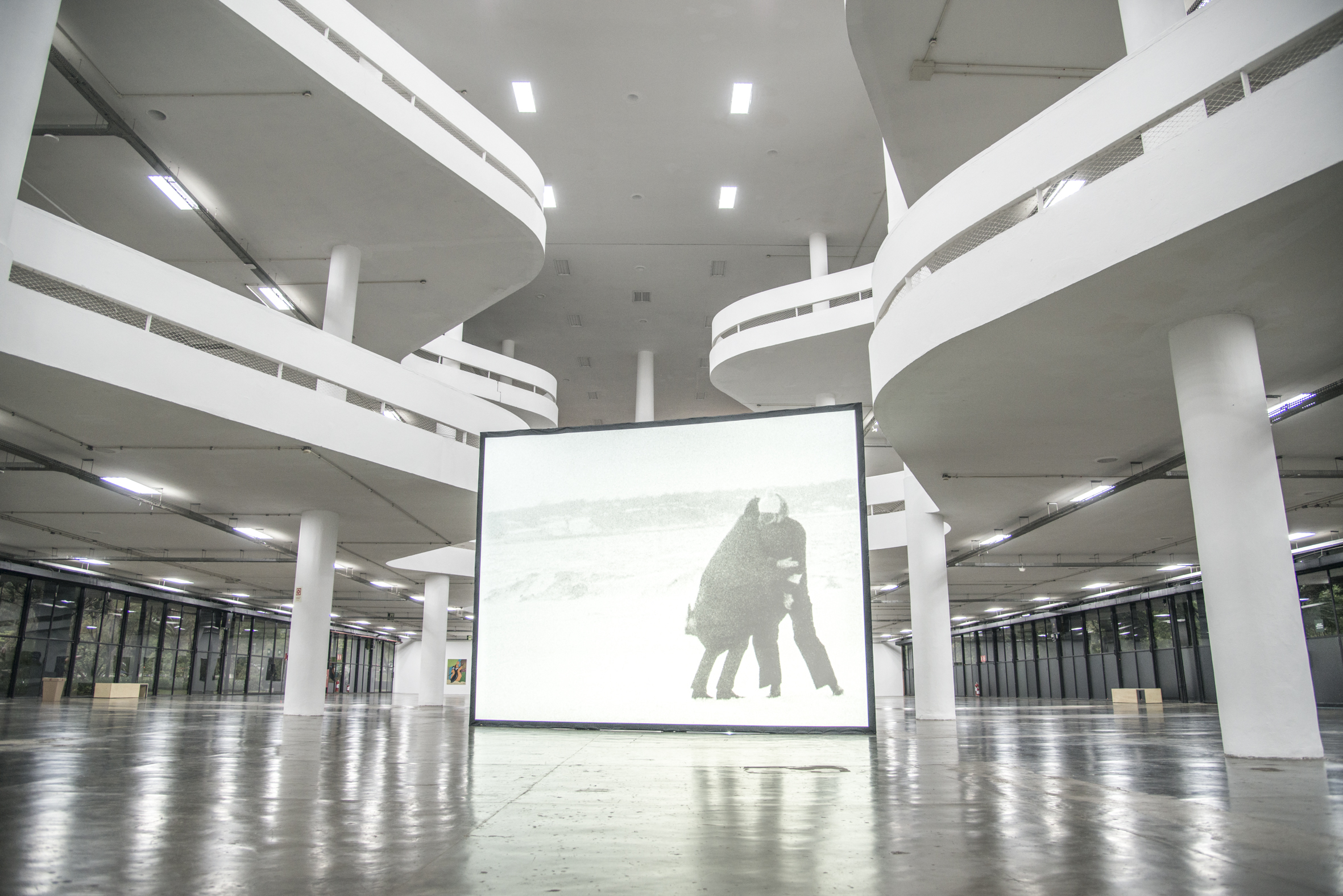
The 34th Bienal was conceived as a sort of open rehearsal, an exhibition in process. The tragic events of the last months have brought significant changes to the choreography as it was initially imagined, but also reinforced the relevance of a show that is continuously under construction and which publicly reflects on itself. The distance between the works, many of them dematerialized, is the most striking feature of this installment of the Bienal, which invites the public to look not only at the artworks, but also at the space between them, and to read in this gesture a poetic resonance of the need to distance oneself from others and from the world. That such a large space can be filled by so few works is a demonstration of art’s capacity to reverberate infinitely, making it an irreplaceable tool for facing and overcoming gloomy moments like these that we are now experiencing.
In her film Wind, the North American artist Joan Jonas recorded the efforts of a group of performers to execute a choreography on a beach on Long Island, New York, on one of the coldest days of 1968. Combining banal movements with enigmatic ones, shifting between ritual and improvisation, the dancers struggle against the wind, which gusts violently against their bodies. It was obviously not an easy day for dancing. It was also not just any year, and perhaps this work by Jonas indirectly alludes to the maelstrom of revolts and transformations that was then blowing in a good part of the world. The film does not portray only the performance, it portrays the wind: the dancers’ role, in this sense, is to make the wind visible. Sometimes it is necessary to place something into the void to reveal that it is full. Full of things that we cannot touch or hold in our hands; things whose origin or functioning we do not manage to understand, but which define and regulate our life, feeding and nourishing it. Or, like a gust of wind, shuffling and confusing it.
As stated by Édouard Glissant, There is no absolute beginning. Beginnings flow from everywhere, like meandering rivers – even more so, in an exhibition like this one, which functions as a turning point, signaling a change of course, rather than an interruption or the beginning of a movement. Glissant also talked about echo-worlds: worlds made of echoes and which, like almost everything in his poetics, are in constant transformation, to the point where we no longer know where each word originated, in an endless process of creolization and cross-fertilization. The wind carries the echo, which is simultaneously what was said and its future reverberation inward. Wind functions analogously as a sign of this edition of the Bienal, in the sense that it points to some of the themes that will return expanded in the exhibition in September of next year, while it also refers to what has already happened, just like in semiotics the indexical sign has the quality of a footprint.
With its emphasis on the uninterrupted process of transformation of everything that is alive (from a plant to a culture), the work Insurgencias botánicas [Botanical Insurgencies] – shown for the first time some months ago at the opening of the 34th Bienal – has come to symbolize the curatorial strategy of conceiving the show as a process rather than as something crystallized or fixed. The light of November is not the same as that of February; now, tikmũ’ũn chants resound around the plants, which grew, wilted, and then began growing again; the polycarbonate structure that delimited the space was dismantled and part of it appeared on the ground floor to mark the entrance of this exhibition. Outside of here, evidently, things have changed even more. Showing the same works more than once, at different moments and contexts, emphasizes that nothing remains the same: not a work of art, not who looks at it, not even the world around them. The artworks operate, in this sense, like the gestures of the performers in Wind: they have their logic and their specificity, they are nodes of poetry, anger, memory or resistance, but they also help us, simply, to see what is around us, to touch and to see, if this is possible, the space that separates us and the wind that blows between us.

